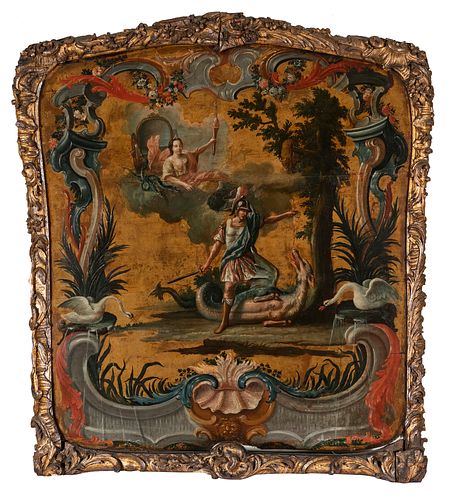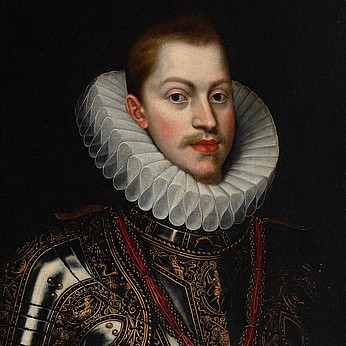French or Spanish work; circa 1760. "Mythological Scene." Oil on wood panel.
Lot 30
About Seller
Setdart Auction House
Carrer Aragó 346
Barcelona
Spain
Setdart Subastas was born in 2004 and is currently the first online art auction in Spain with solidity, prestige and reliability guaranteed by our more than 60,000 users. Setdart has a young, dynamic and enterprising team ready to successfully manage the purchase and sale of art works through custom...Read more
Estimate:
EUR€3,000 - EUR€3,500
$3,125 - $3,645.83
Absentee vs Live bid
Two ways to bid:
- Leave a max absentee bid and the platform will bid on your behalf up to your maximum bid during the live auction.
- Bid live during the auction and your bids will be submitted real-time to the auctioneer.
Bid Increments
| Price | Bid Increment |
|---|---|
| EUR€0 | EUR€10 |
| EUR€200 | EUR€25 |
| EUR€500 | EUR€50 |
| EUR€1,000 | EUR€100 |
| EUR€3,000 | EUR€200 |
| EUR€5,000 | EUR€500 |
| EUR€10,000 | EUR€1,000 |
| EUR€20,000 | EUR€2,000 |
| EUR€50,000 | EUR€5,000 |
About Auction
By Setdart Auction House
Nov 24, 2021
Set Reminder
2021-11-24 09:00:00
2021-11-24 09:00:00
America/New_York
Bidsquare
Bidsquare : Old Masters, Day 1
https://www.bidsquare.com/auctions/setdart-auction-house/old-masters-day-1-7873
Setdart Auction House sofia@setdart.com
Setdart Auction House sofia@setdart.com
- Lot Description
French or Spanish work; circa 1760. "Mythological Scene." Oil on wood panel. Preserves original frame. Measurements: 90 x 76 cm. Due to the format of this work it is necessary to mention that it was probably originally conceived as part of a larger set, perhaps a door of a stroller or paravent. As for the mythological scene it represents it is difficult to quote or specify since there are many elements, first, located in the upper left area a goddess sitting in a chariot carrying a torch, next to her two snakes coiled together, attributes that can be attributed to the goddess Demeter. In the case of the male character, who is dressed as a warrior, he is presented besieging an animal that he seems to be giving to drink. The animal has the face of a feline or canid, a female body and a serpent's tail, characteristics that do not quite fit the description of the Chimera, the Cancerberus, or Ceto, mythological animals that were defeated by heroes. To conform the scene the artist has based himself on a classic and simple composition of triangular character, which allows the spatial facility at the time of establishing the narration of a scene as in this case. The drawing is enhanced with a very refined technique that allows the inclusion of detail and thoroughness, an example of this is the helmet of the main character. The academicism is a direct inheritance of classicism, and hence the predilection for themes such as the one presented here, taken from mythology, although captured from a sensual and decorative point of view away from the solemnity of ancient classical art. Hence also the way of approaching the subject, recreating the mythological figures in a totally new way. However, we can appreciate an ideal of beauty that is not based on reality, although the painter's study of nature is undeniable, but rather an idealism based on reality due to his sum of experience, that is, an aesthetic sublimation that reflects a beauty that transcends reality.
- Shipping Info
-
In-house shipping available. Please inquire at admin@setdart.com.
-
- Buyer's Premium



 EUR
EUR CAD
CAD AUD
AUD GBP
GBP MXN
MXN HKD
HKD CNY
CNY MYR
MYR SEK
SEK SGD
SGD CHF
CHF THB
THB















